CSB063 - MRI Spine
1/26
There's no tags or description
Looks like no tags are added yet.
Name | Mastery | Learn | Test | Matching | Spaced |
|---|
No study sessions yet.
27 Terms

What weighting is this image? What structures appear hypointense in these sequences?
T2
Tendons
Ligaments
Cortical bone
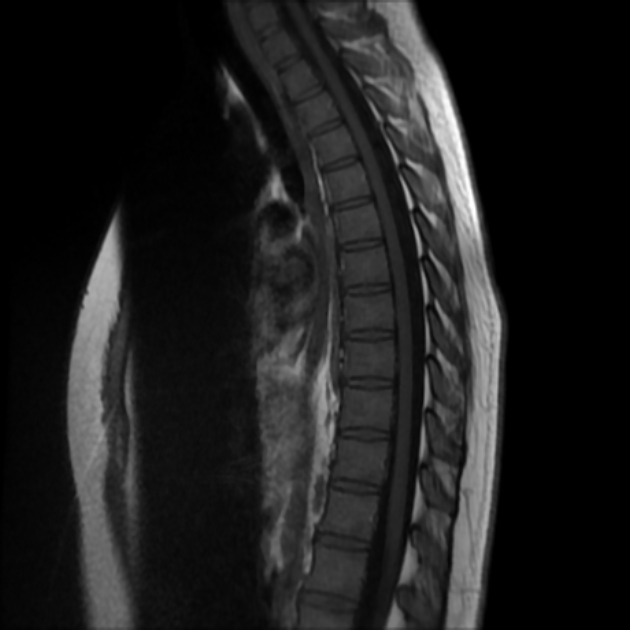
What weighting is this image? How can you tell?
T1 - CSF is dark/hypointense
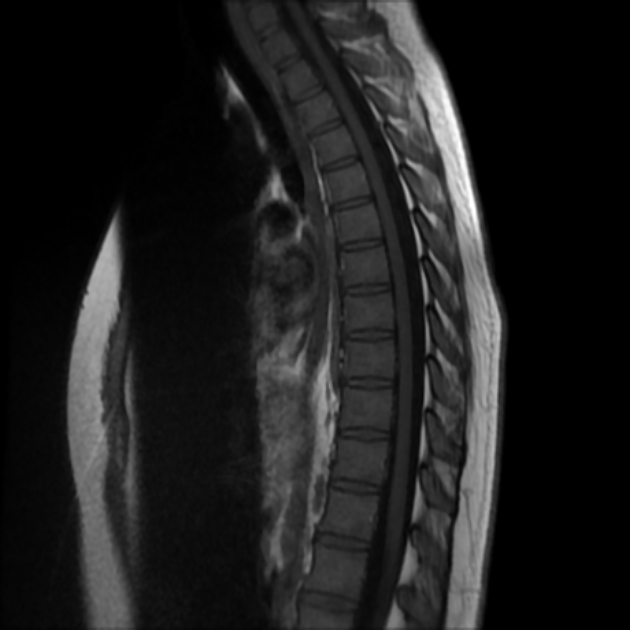
Why is there a saturation band on this thoracic spine image?
To decrease respiratory motion and cardiac/aortic pulsation
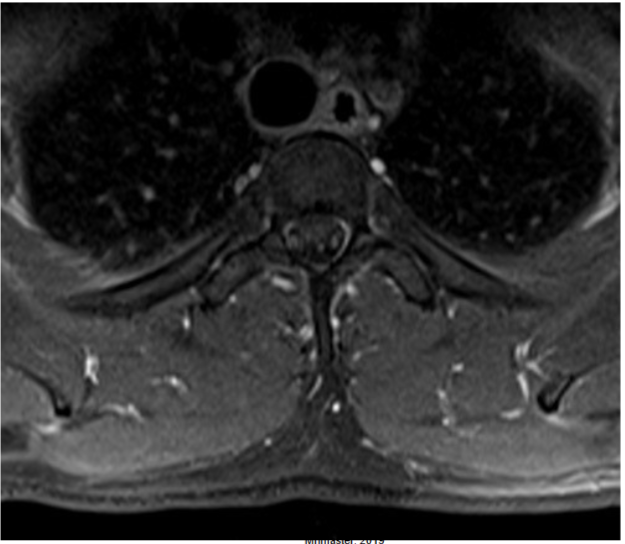
What weighting is this image? How can you tell?
T1 FS - CSF is dark/hypointense and fat is nulled
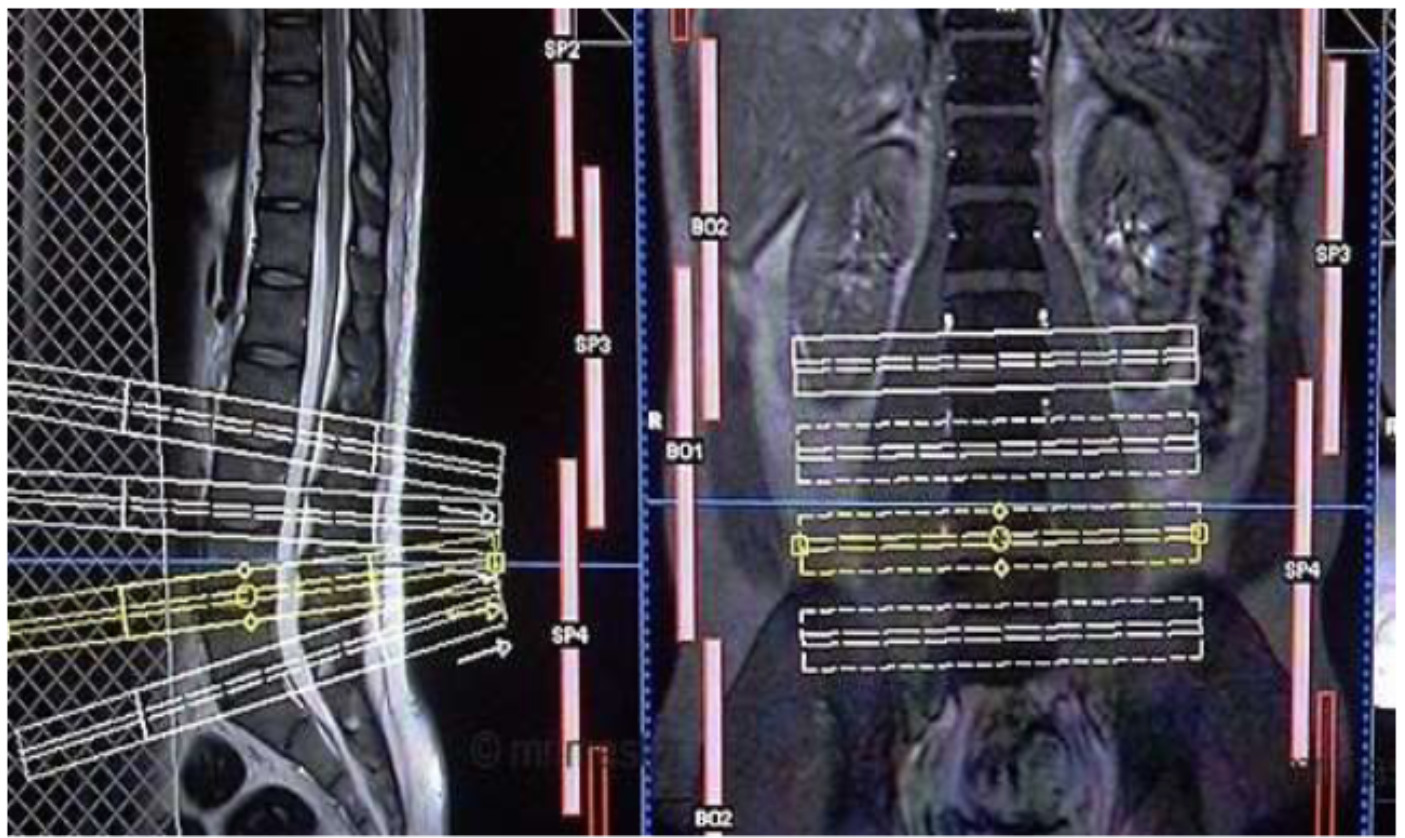
Why are the axial slices on these lumbar spine planning scans angled?
Due to the curvature of the lower lumbar vertebrae

How was this image created? For what clinical indication would you perform this technique?
Each stack/region of spine was acquired separately (using the same FOV) and then stitched together
For scoliosis
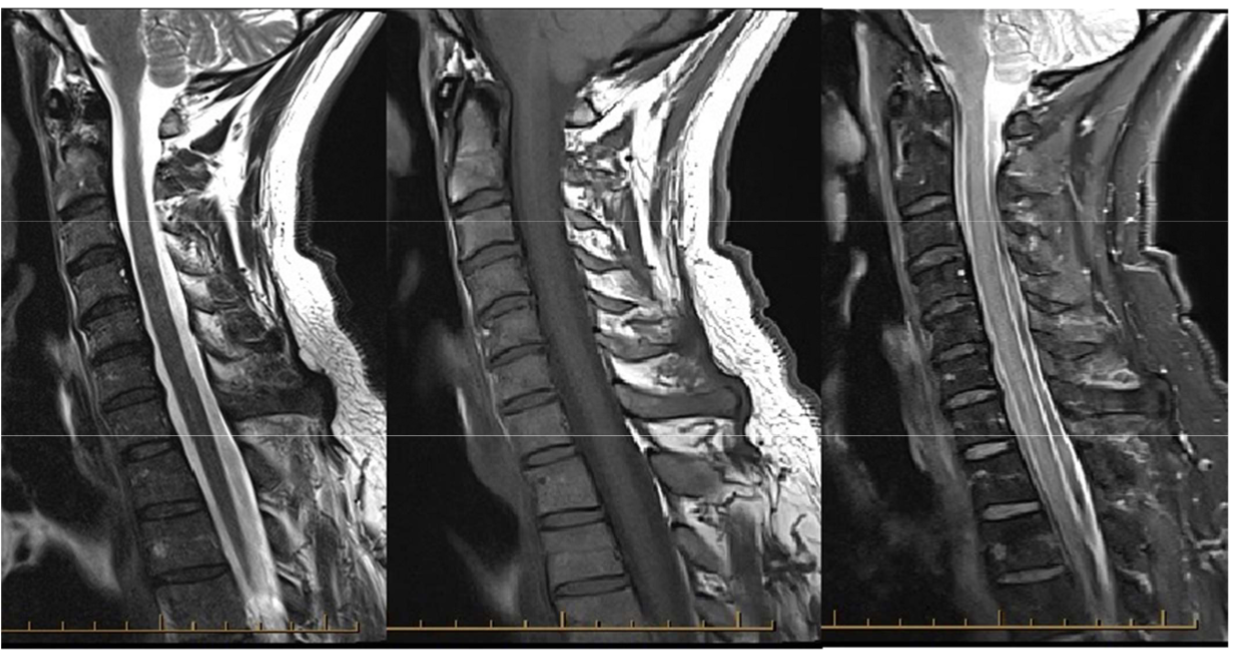
List the image weightings shown.
T2, T1, T2 STIR
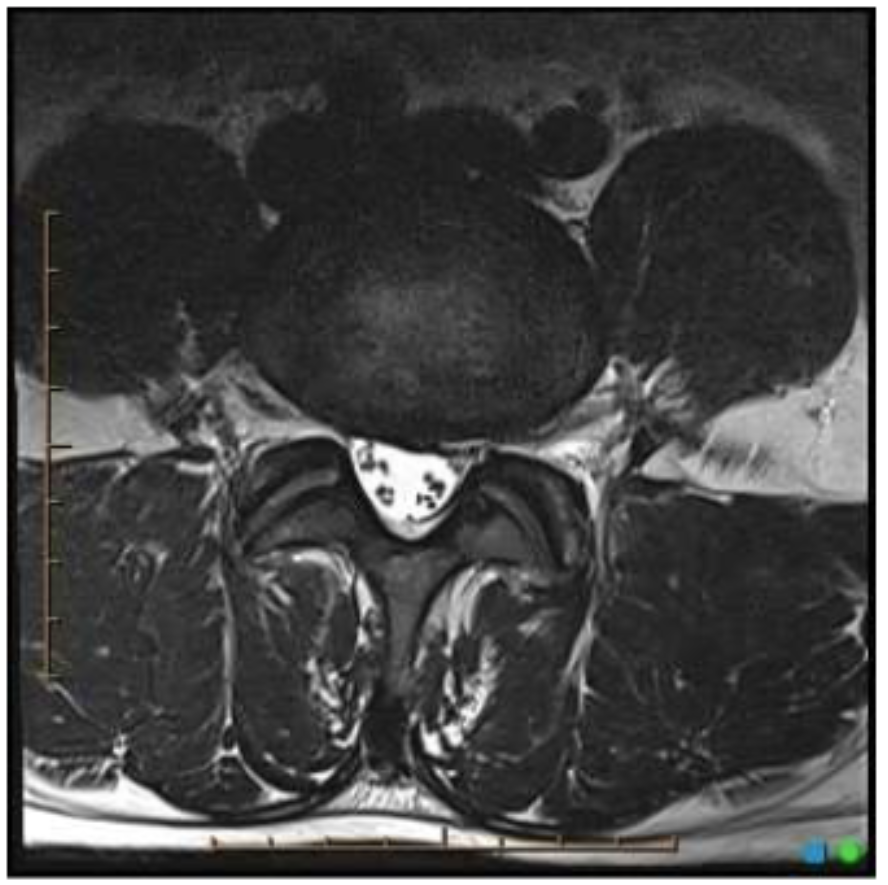
What is the image weighting of this slice?
T2
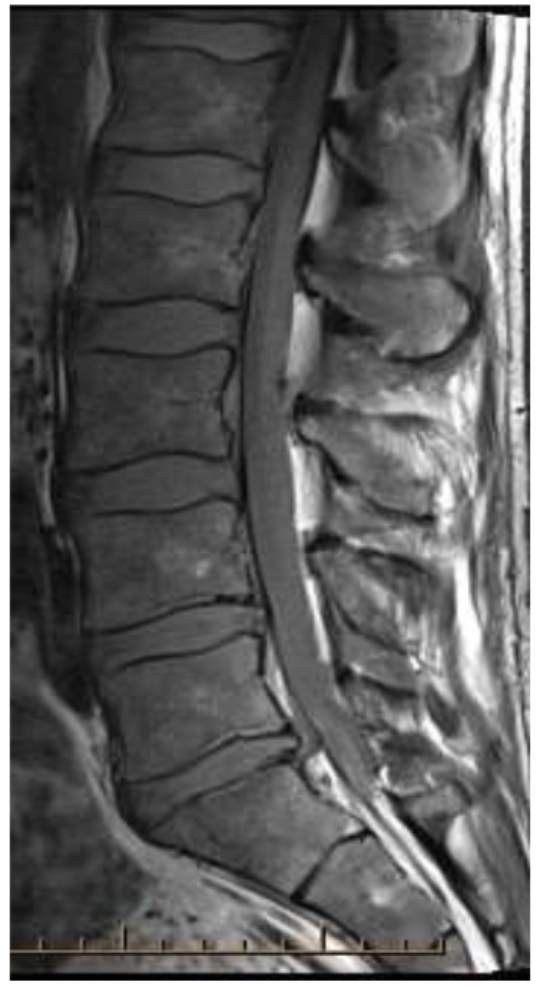
What is the image weighting of this slice?
T1
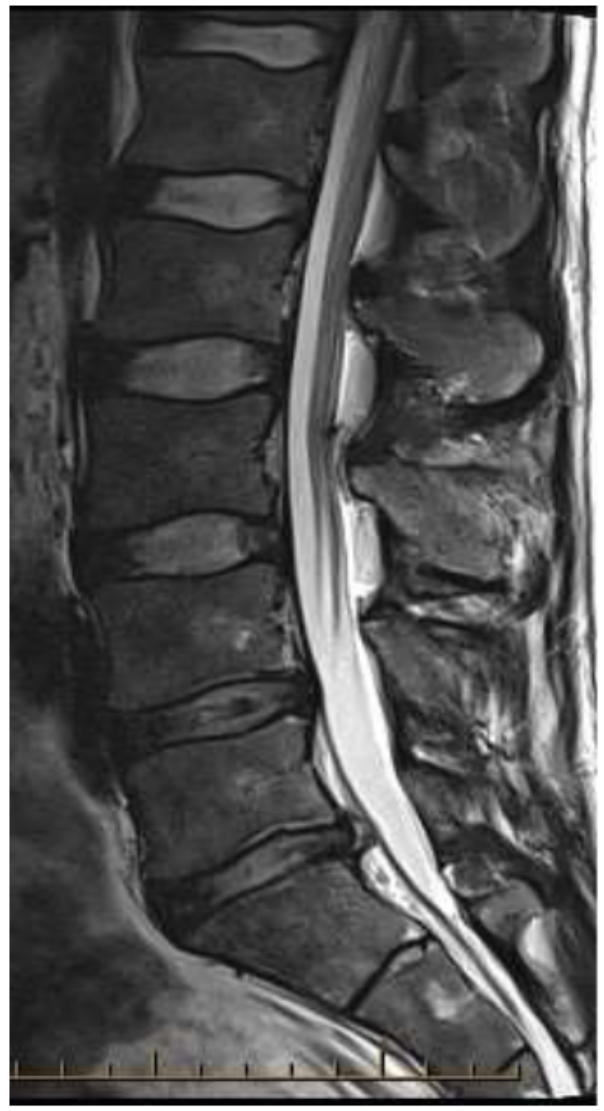
What is the image weighting of this slice?
T2
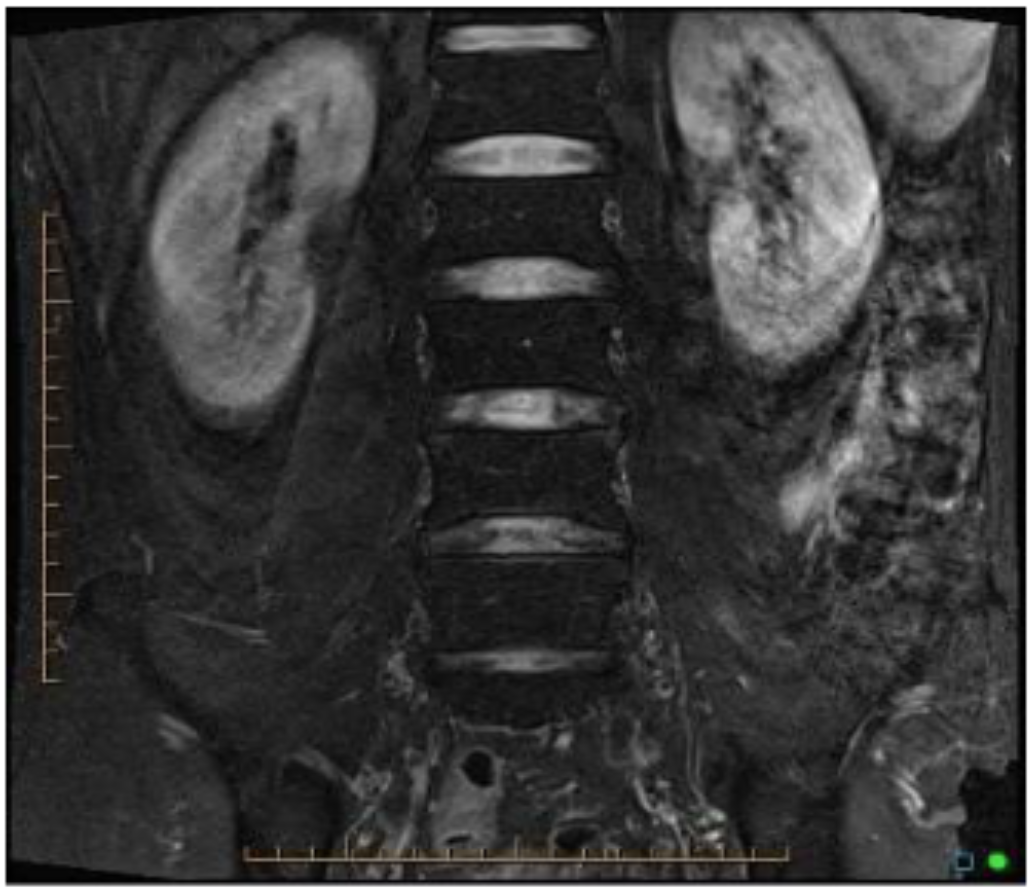
What is the image weighting of this slice?
T2 STIR
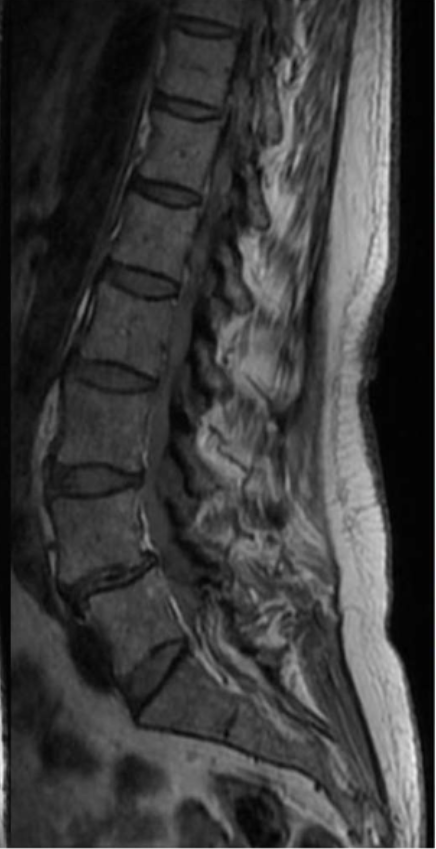
Name the main pathology demonstrated.
Spondylolisthesis of L5 (posteriorly)
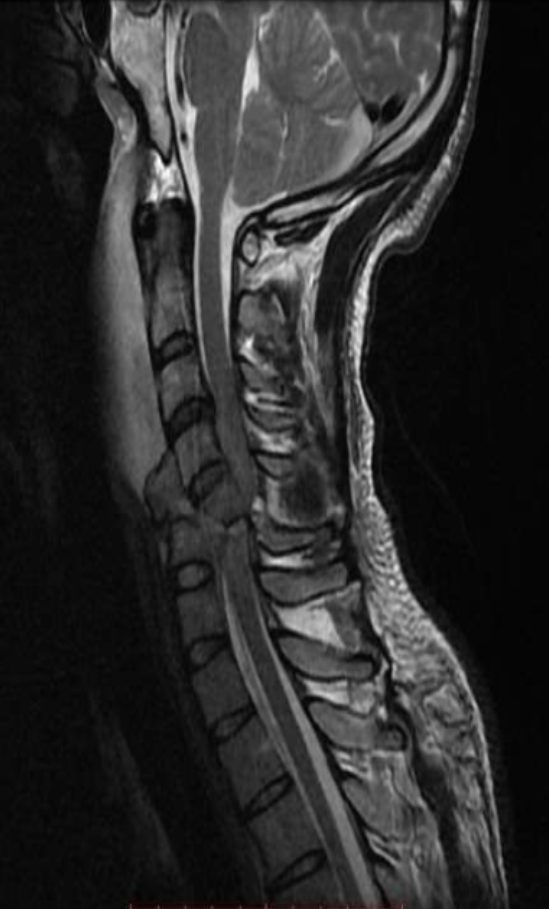
Name the main pathology demonstrated.
T5 vertebral body fracture causing cord impingement
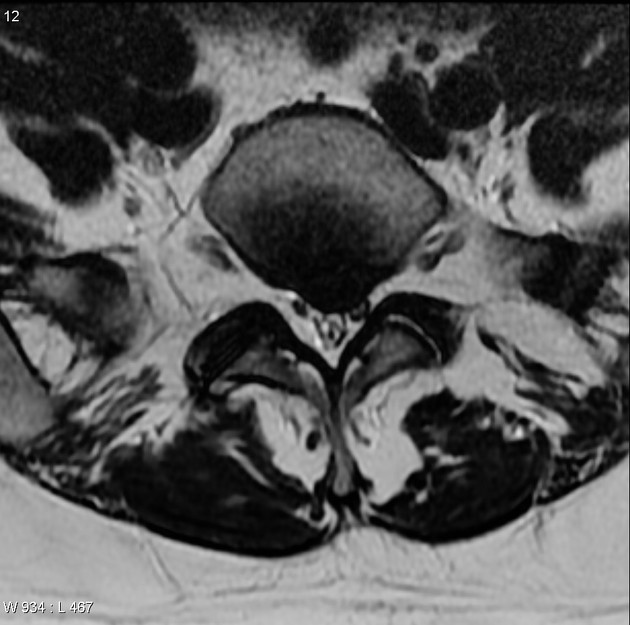
Name this pathology.
Disc protrusion, impinging on left nerve root (S1)
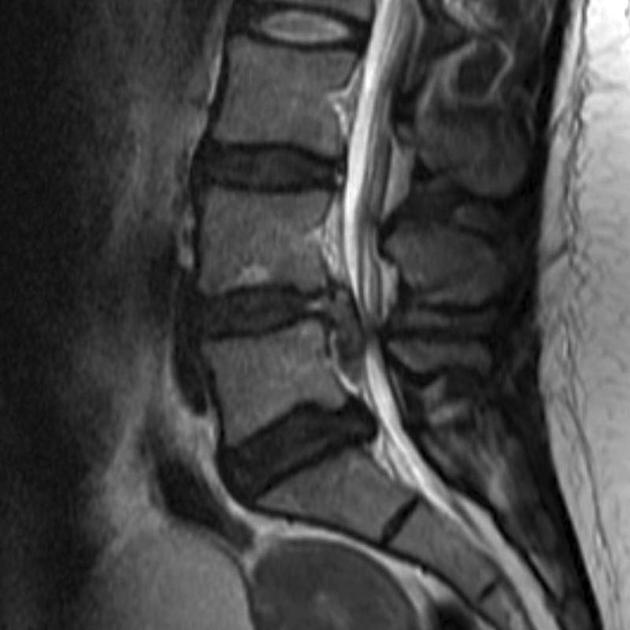
Name this pathology.
Disc extrusion at L4/5

Name this pathology.
Disc protrusion at L4/5 and L5/S1 with canal involvement

Name the main pathology.
Disc sequestration posterior to L3 vertebral body
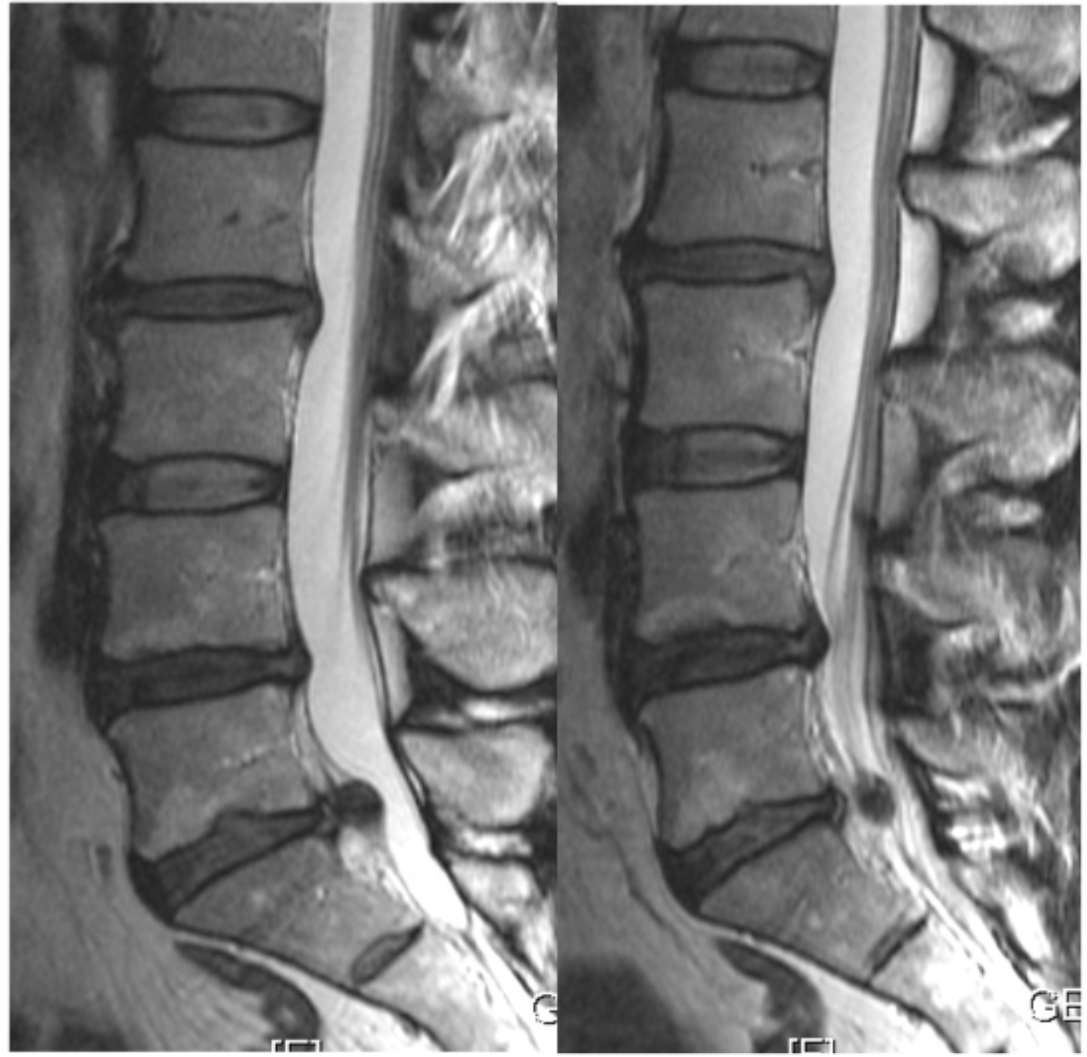
Name the pathology.
L5/S1 disc sequestration
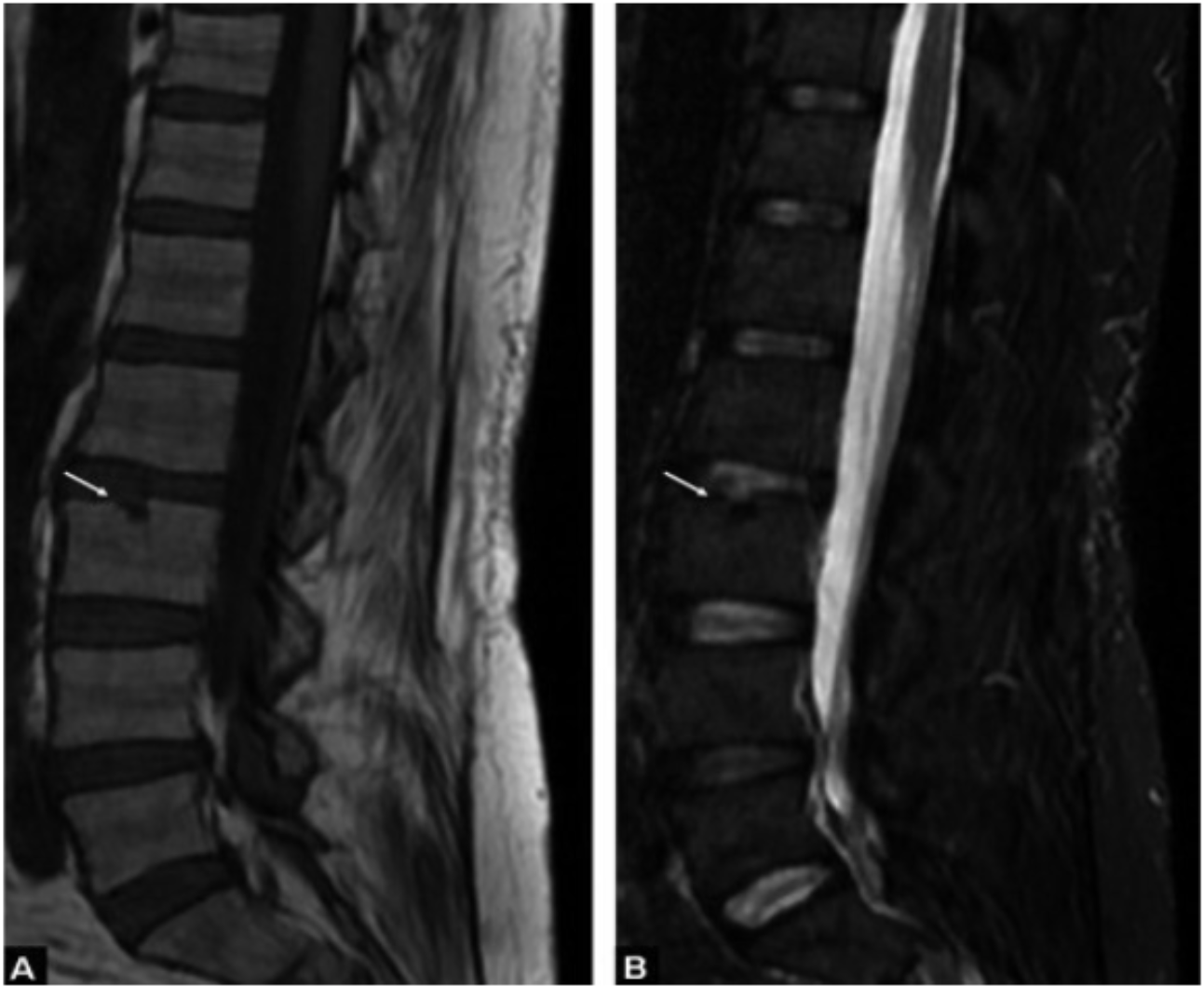
Name the pathology (indicated by arrows).
Intravertebral herniation
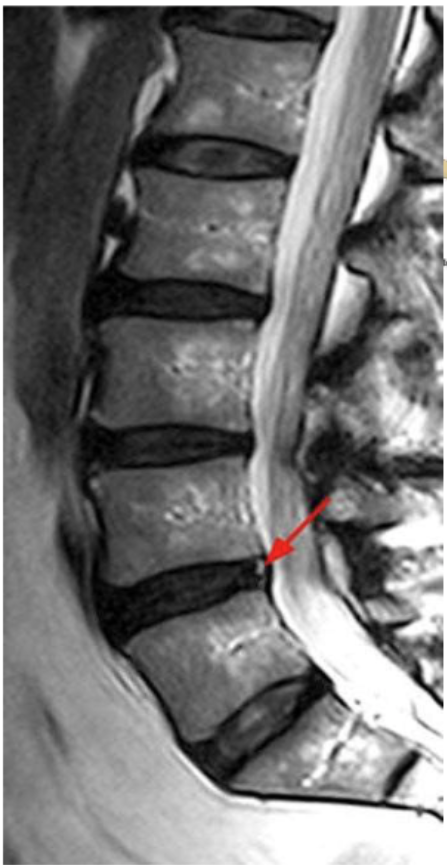
What might the high signal at the posterior aspect of the disc (indicated by red arror) be?
Annular tear

What might the high signal at the posterior aspect of the disc be?
Annular tear
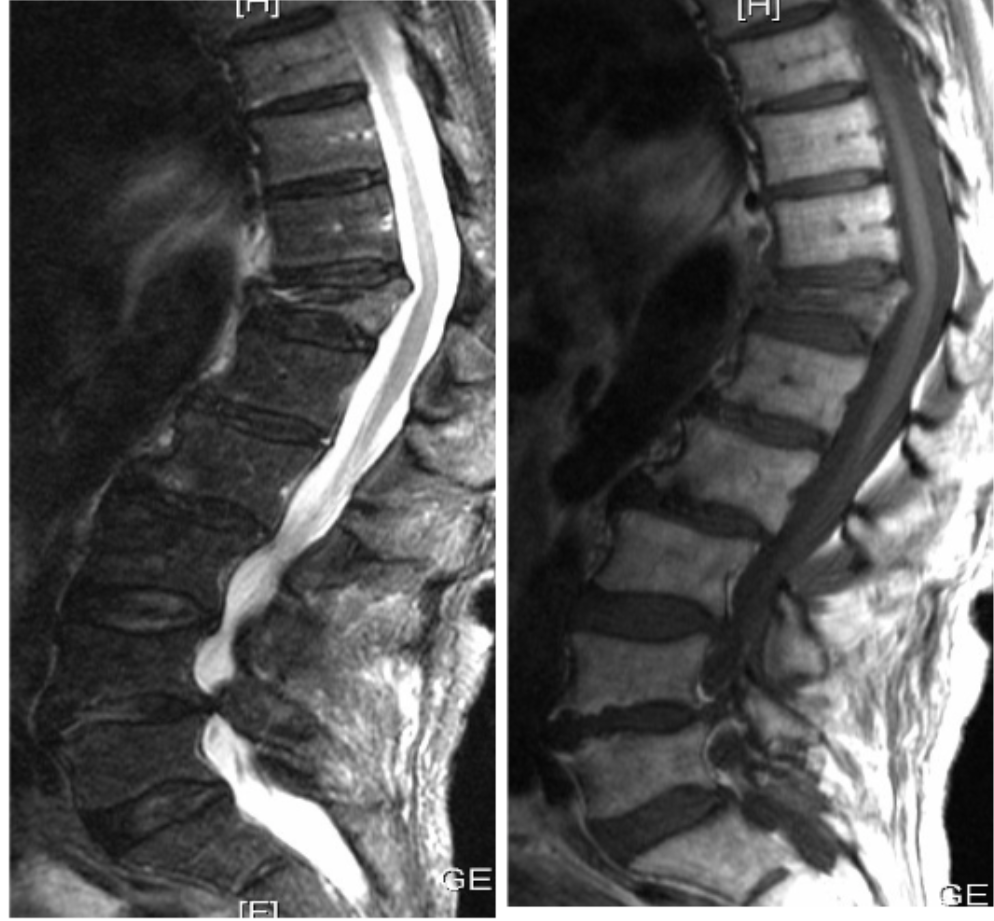
Name the main (bony) pathology.
Compression fracture, with canal involvement
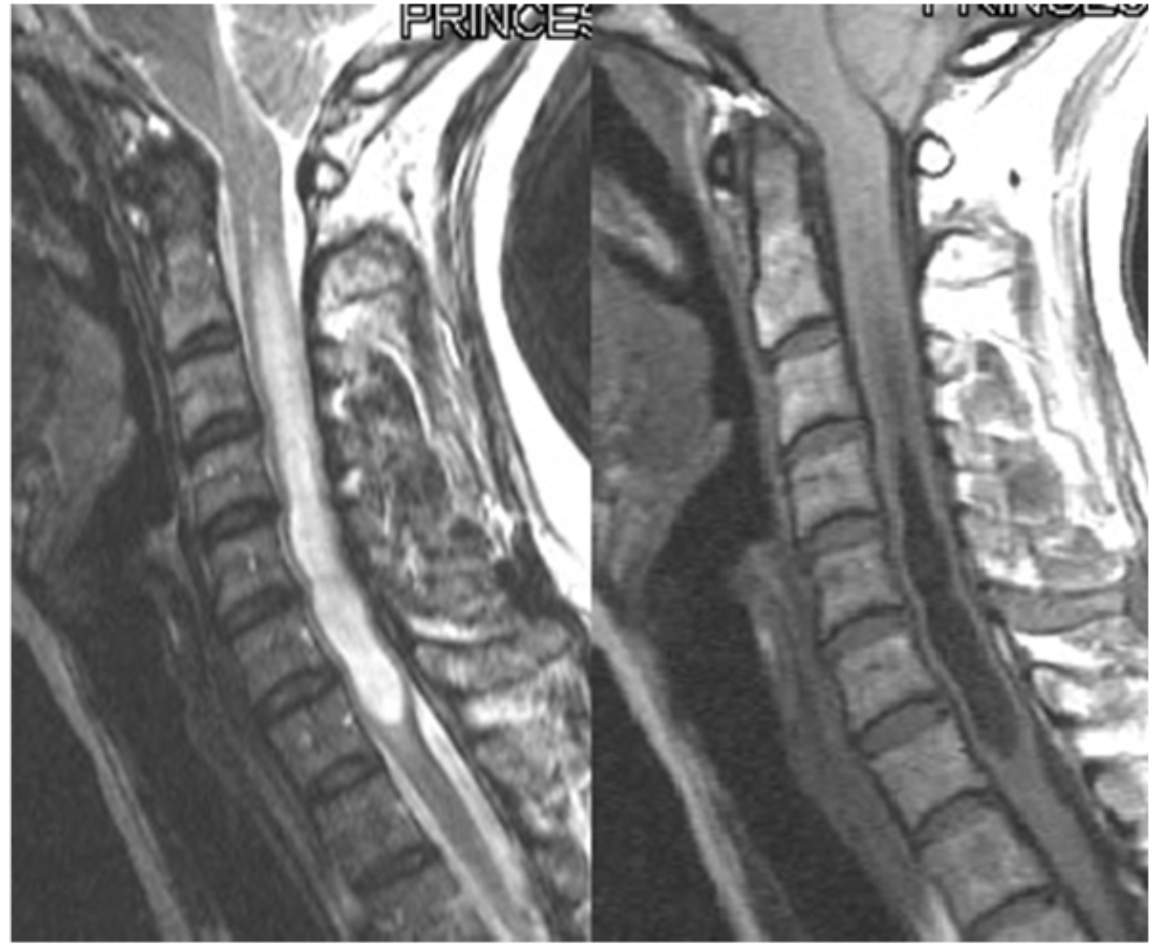
Name the pathology and explain what is it.
Syrinx - fluid-filled cyst within the spinal cord
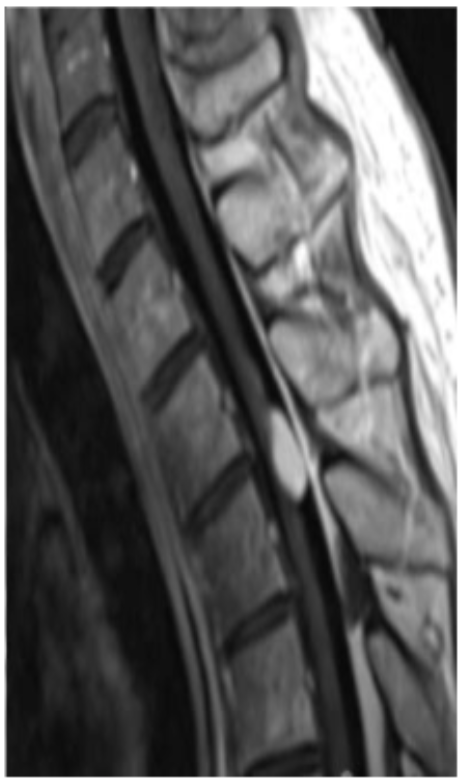
Name the weighting of this sequence and the pathology shown.
T1, hyperintense lesion around the spinal cord (tumour)
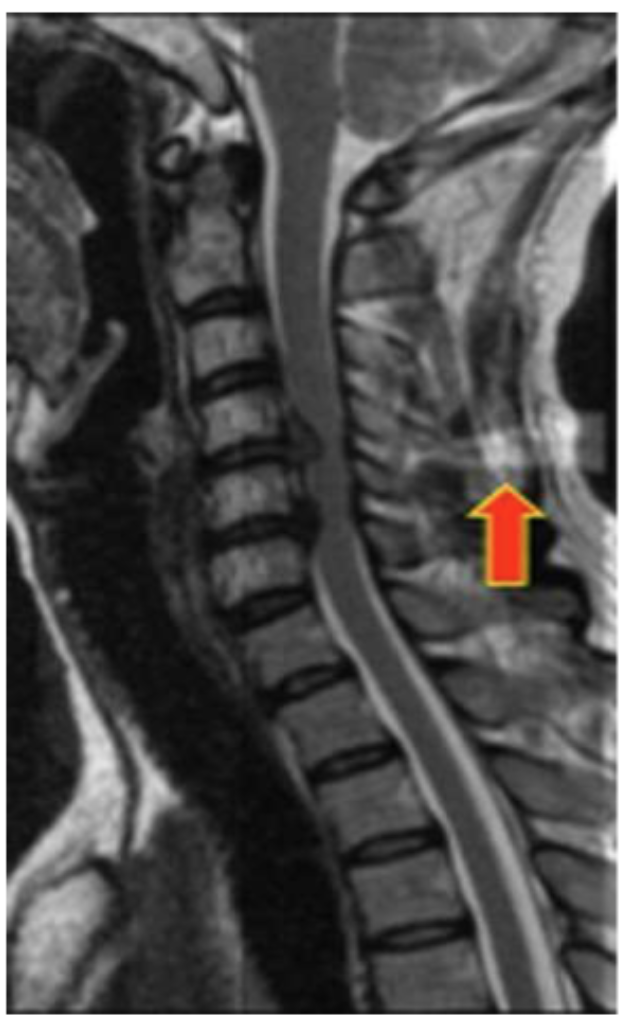
What artefact is present (red arrow)?
Aliasing artefact

What techniques can be utilised to overcome this artefacts?
Arms above head
Phase oversampling
Increase FOV
Saturation bands
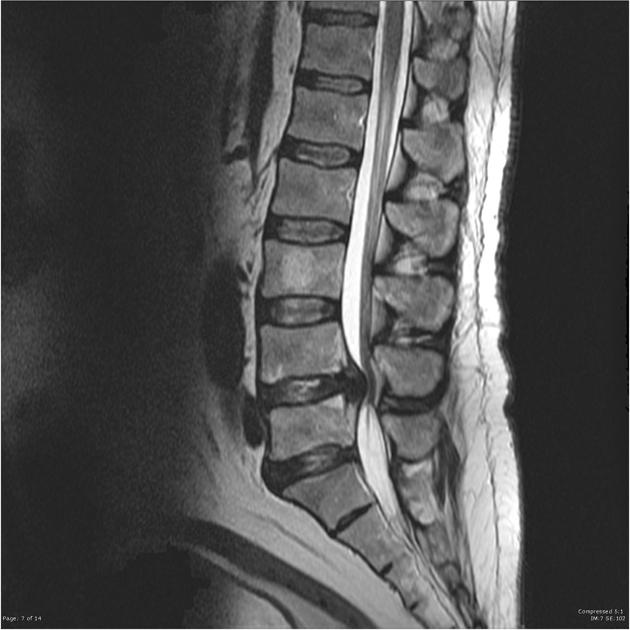
Name this pathology. What structure is it impinging on?
L4/5 disc bulge, impinging on the cauda equina